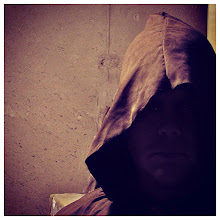
There are a multitude of approaches possible with this process. But through my short time experimenting, I've developed a method to make it as economical as possible.
There are a few overall tips that apply to each one of these layers and a process as a whole:
Try to avoid the painted-on look. These can be visible brush strokes, edges of marks where pigment builds up, or perhaps covering the layer underneath up too much. Color of actual rocks comes from it's substance, not a thin superficial layer of pigment. Experiment with the application.
Subtlety is key. Pigments should not reach more than a few degrees from neutral grey. It's good to have a variety of hue and contrast, but keep them orbiting very close.
Don't use the exact same color for corresponding layers of every rock. If you want uniformity, mix it up again and try to color match; you will get close but have enough color variation to mix it up. Or you can use the same batch (to save paint and time) and just add a touch of something.
Understand that water-based paint will dry darker and cooler than what you see when mixing. This phenomenon increases with the addition of water.
Let accidents happen. Sometimes you get in the groove of the formula and as a result your surface could and up too even. Let more paint build up in one area; leave it sparse in another. And remember that randomness does not mean uniformly dispersed: there may be a huge space of not much variation, while another space could be crowded with it.
So, the first layer. After the cement textured how I want, I mix up a mid to darker brown/gray for the underlayer. I make it as opaque as I can, and add quite a bit of water (I'm not exactly sure the ratio, I just feel it out). This should be thin enough for full coverage without filling in wanted cracks and gaps. Thicker paint would build up and look like goop smeared on.

For the second layer, I try to subtly compliment the underlayer. For example, if the latter is slightly purple, I try to move that distance of yellow for the next layer. I also mix it barely higher in value. When applying, I saturate the brush, wipe it dry, then scumble the paint on. Let the layer underneath peek through. This will create a gray, but a more dynamic gray, since it is an optical mix of color. It also lifts the texture and activates the surface. In the image below, you can see the 2nd layer has been applied half way down.
In the 3rd layer, I try to shake up the evenness a bit by adding a temperature variation. Sometimes by the 2nd layer, pieces can have a Castle Grey Skull look, and some warm or cool variation can help break it up. This works best for me by again adding ample water, soaking a big house brush, and stabbing the paint into it.
The 4th layer lifts highlights out. Mixing up a dryer paint a few notches up in value, I dip the brush and again wipe out excess moister. Then I loosely slap the brush back and forth over he surface; the protruding edges and bumps will be lifted out, and give the appearance of be rubbed or weathered over a period of time. The below image is an example, but in the image above you can see in mid application at the top.
In the last layer I do some finishing touches. I might add more highlight in an area that looks light it would be exposed more. Or smash a wet brush into the top or side and let it drip down. Use your imagination.
For the last week of work, I'm taking them all out again and adding some more weathering. Bird poop, rain, moss, dirt kicked up from the bottom, etc. for the final touch.







No comments:
Post a Comment